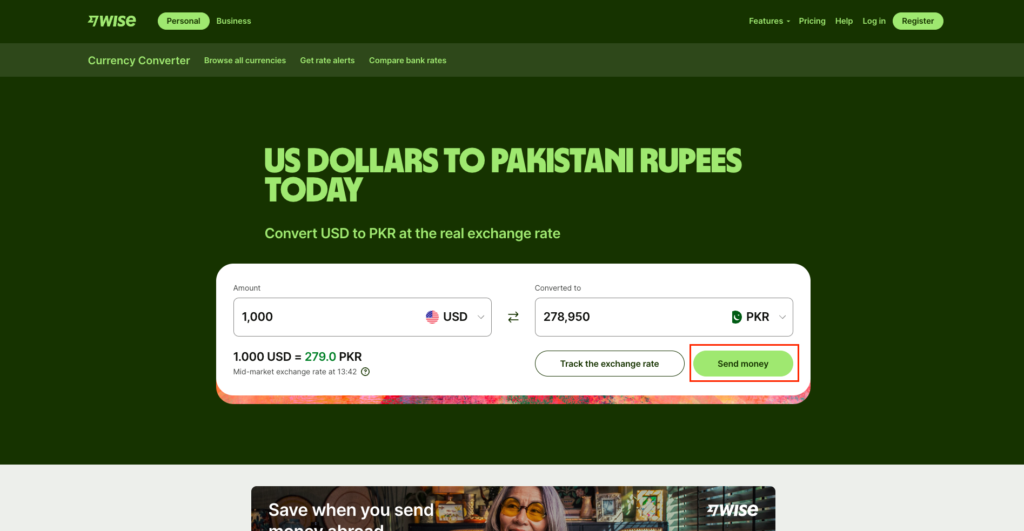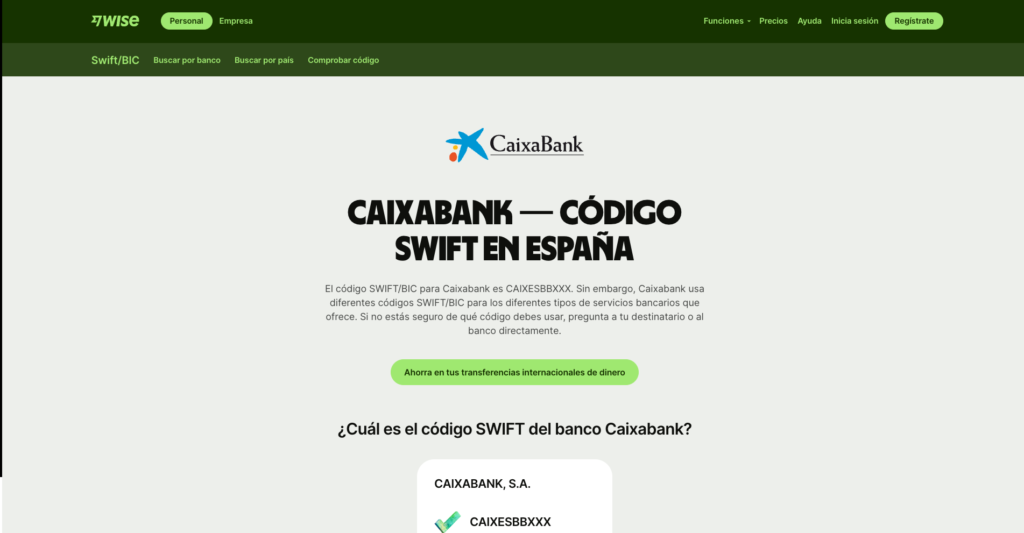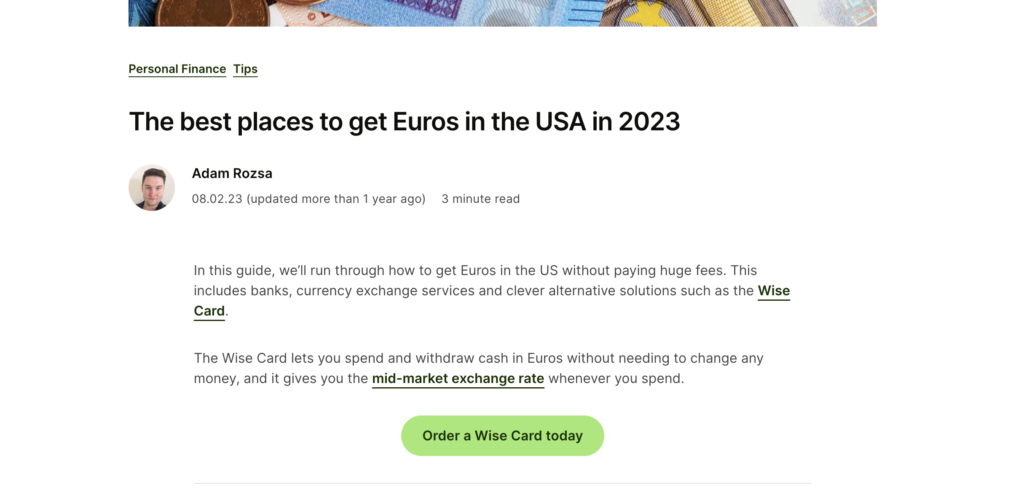Wise, formerly known as TransferWise, has solidified its position as a leading figure in the international money transfer sector, boasting a current market valuation of approximately $11 billion USD. Originating in London, this fintech giant has revolutionised the concept of borderless banking, serving over 10 million customers globally as of mid-2023.
Given such impressive figures it makes me think what’s the significance of SEO in Wise’s marketing strategy?
Wise Top Level SEO Metrics
Domain: wise.com
Monthly Organic Traffic: 53.7M
Domain Rating: 85/100
Referring Domains: 38.1K
Wise’s Global Reach and Audience
From its origins as a London-based startup, Wise has evolved into a global fintech icon, demonstrating its broad appeal and adaptability. The distribution of Wise’s web traffic underscores its worldwide influence, with no single country dominating its user base. This even spread reflects the platform’s ability to meet diverse financial needs and preferences across the globe.
The top five countries contributing to Wise’s traffic showcase its international footprint:
- Pakistan: 3.8M Traffic which is a 7.1% share.
- United States: 3.7M Traffic which is a 7% share
- India: 3M Traffic which is a 5.6% share
- Thailand: 2.3M Traffic which is a 4.2% share
- United Kingdom: 2.1M Traffic which is a 3.9% share

Wise’s evenly spread global web traffic highlights the effectiveness of its international SEO strategy, finely tuned to engage diverse markets. Their approach, understanding local search trends and addressing regional financial needs, boosts their global search engine presence.
This focused international SEO not only heightens Wise’s visibility but also affirms its status as a trusted international financial platform.
Programmatic SEO
Wise are pioneers of programmatic SEO, generating 43.5 million visits per month (82% of its total traffic) to its currency converter pages.
These pages rank when people search to convert the various currency combinations that Wise offers, such as “euro to dollar” which gets a huge 1.4M monthly searches.
The MVP Framework: From Manual to Automated SEO
Wise’s journey into programmatic SEO began with an MVP (Minimum Viable Product) framework. Initially, the process involved manually creating pages to verify the volume and search intent. This hands-on approach allowed the team to gather essential insights and validate the demand for specific content. However, with the ambition to dominate the SEO landscape, manual creation was neither scalable nor efficient in the long term.
Recognising the limitations of conventional tools, Fabrizio and his team began working on developing a custom CMS. This system was not just another piece of software, it was a strategic asset built from the ground up to address the unique SEO challenges faced by Wise.
Scaling SEO with APIs
The true power of Wise’s programmatic SEO approach became evident as they transitioned to scaling their efforts. The custom CMS was designed to be flexible and robust, allowing for the seamless integration of APIs. This architectural decision enabled the automation of deploying thousands of pages, each optimised for search engines and tailored to specific user intents. With many iterations along the way Wise’s custom approach to programmatic SEO has grown to be one of the best examples in the industry!
Digging a little deeper we can see that wise gets the majority (82.35%) of its traffic to its “currency-converter” pages 43.4M of 52.7M to be exact.

These pages are nothing more than a simple currency calculator with the addition of a “Send Money” button and a little content.
This simple page perfectly matches the intent for people searching keywords like “dollar to pkr” which get searched on google 4M times every month! According to Ahrefs.

And Wise didn’t just stop after setting up their popular “currency-converter” pages. They’ve been busy, rolling out over 250,000 of these pages since February 2021. That’s a whole lot of pages covering pretty much every currency combination you can think of.
The result? Over 43M monthly traffic going to what we believe are some of the highest converting pages on their website!
And that’s not their only programmatic strategy. They have also published ~100k “SWIFT code” pages, targeting people searching for specific bank’s sift codes. The logic being this audience is likely planning on making an international transfer.
These pages bring in over one million visits per month from organic search.

An example of one of Wise’s programmatic SWIFT code pages, which ranks first in Google in Spain for the keyword ‘caixabank swift’, a term with 10k searches per month.
Editorial
While programmatic SEO drives the vast majority of Wise’s traffic, they have also aggressively pushed on editorial SEO too.
They’ve published around 20k blog posts which bring in over 3 million monthly visits from organic search. When publishing SEO-led content at scale like this, the challenge is maintaining relevance, and they do this exceptionally well in my opinion.
These blog posts all highlight a specific product feature in some way, and target users at different points in the funnel.
Some example keywords are:
‘How to get euros in the US’ (2.4k)
‘venmo vs zelle’ (2,8k)
‘best prepaid travel card’ (2k)
‘how to apple pay someone’ (5.8k)
They cleverly identify country-specific opportunities that suggest an impressive depth of thought that has gone into the content strategy. For example, they’re ranking number one for the popular keyword ‘comprar iphone na argentina’ (‘buying an iphone in argentina’) in Brazil.
At first this seems a bit random, but it taps into local knowledge that people in Brazil will often buy electronics in Argentina to avoid import fees. The article breaks down the pro and cons of crossing the border to buy an iphone, before then pushing their international payments card.
At times I do think perhaps the targeting is a little bit of a stretch. For example, they have a piece titled ‘The 27 famous landmarks and places in the world to visit’. While there is a natural bridge to their international debit card product here, for me the intent is too broad. But these pieces represent a small minority and are inevitable when publishing this much content.
The content itself is well structured, researched and written for both humans and search engines. The blog UX is also high quality and makes the articles easy to read and skim. They have various styles of CTAs – including banners, buttons, and text – which help squeeze as much value as possible from their traffic.

An example blog post demonstrating Wise’s clean UX and strong CTAs
Backlink Profile
Wise.com stands out as a dominant force in the currency exchange niche, consistently appearing at the top of search results for related queries. However, this level of search engine dominance isn’t just about having the right keywords or user-friendly design; it’s also about trust. And how does Google measure trust? One key way is through a website’s backlink profile.
Backlinks, simply put, are like votes of confidence from one site to another. Each link from a reputable site is a nod to the quality and reliability of the content. It’s not just the quantity of these ‘votes’ that matters, though; it’s the quality.
As of January 2024, Wise has amassed an impressive collection of over 15 million backlinks, coming from 38.1K unique referring domains.

A significant 19% of these unique domains, to the tune of 7,283, point straight to the Wise homepage. This is often a tell-tale sign of a robust PR strategy at play where both active outreach and passive media interest shine through.
This is no doubt in part thanks to their creative PR strategy, including stunts like:
7.5% (2,847) of these referring domains are linked to the “currency-converter” pages.
The rest of the backlinks (74%) are distributed quite evenly across the website, contributing to Wise’s overall high authority.
Some pretty big names are in Wise’s corner, like Apple, Bloomberg, Shopify, and WordPress. That’s a big deal and shows just how much Wise is valued and trusted in the space.
Tech Stack
Wise actually built an entirely new CMS from scratch to enable it to meet their needs of publishing diverse types of content at scale with SEO best practice.
Specifically, this enables them to:
- Automate and manage internal linking
- Quickly build and scale landing pages
- Easily manage hreflang tags for international SEO, and
- Integrate with databases and APIs.

A slide from Fabrizio Ballarini (Wise’s head of organic growth) slide deck.
Their front end uses Next.js, which is known for its server-side rendering and static generation capabilities – ideal for creating fast, scalable, and efficient websites
Google is currently giving Wise a low score in terms of performance based on site speed, but this clearly has no impact on their ability to rank and retain users. According to Similar Web the average visit duration is 3.5 minutes and the average user views 5 pages per visit!

Wise’s speed score on Google Page Speed Insights.
Competitor Analysis
Wise’s transparency about its competitors on their website is a bold move, reflecting the company’s confidence in its services.
It’s worth taking a closer look at how Wise stands against two of its well-known competitors Revolut and OFX. By examining key SEO metrics such as organic traffic, referring domains, and the number of organic pages, we can gauge the digital footprint and online authority of each company.
| Organic Traffic: | Referring Domains: | Number of Organic Pages: |
|---|---|---|
| Wise: 53M | Wise: 38K | Wise: 401K |
| Revolut: 6M | Revolut: 19K | Revolut: 116K |
| OFX: 800K | OFX: 4K | OFX: 9k |
These numbers clearly demonstrate the scale of Wise’s search engine dominance, showcasing how their smart SEO moves have launched them ahead of the competition.
Final Thoughts
SEO has consistently been a major priority for Wise, and the impact is undeniable. Their meticulous approach to SEO has not only significantly enhanced their visibility on search engines but has also played a pivotal role in building their brand’s global reputation. This strategic focus on SEO has been instrumental in driving user engagement and trust, contributing largely to Wise’s impressive valuation of 11 billion dollars.
Their programmatic “currency-converter” pages have been their strongest play, drawing in a significant portion of their web traffic. These pages, optimised for high-volume search terms, are a testament to Wise’s understanding of user intent and the importance of providing immediate value.
